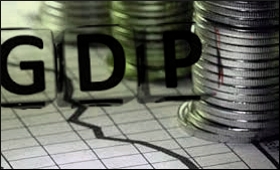India's GDP growth forecast for 2019-20 was lowered by multiple agencies recently. First, the ADB cut it to 7.2% from 7.6%. It was followed by the RBI’s cut to 7.2% from 7.4% and then by the IMF to 7.3%.
The economy grew 6.6% in the December quarter, the slowest in five quarters, which prompted the CSO to trim its 2018-19 forecast to 7% in February. These projections signal to the need of taking care of our growth momentum.
Meanwhile, while the government has consistently claimed that India’s official GDP figures are accepted globally, the IMF Chief Economist recently expressed doubt over them. Previously, 108 economists expressed similar doubt. However, the IMF chief clearly welcomed the changes made to the GDP calculation in 2015, but flagged concerns only over some "deflator" used in the calculation. Our policy makers need to urgently act on this issue as well.
Most economists question why India, despite growing at a rate, which, in global comparative terms, is commendable, has failed to create enough jobs. Earlier this year, a report citing a leaked National Sample Survey Office (NSSO) survey revealed that unemployment in the country was at a 45-year-high in 2017-18. No doubt, in recent years the challenge of youth unemployment has come to the fore, and in terms of job creation the performance of the economy is hardly encouraging.
There are some other economic indicators in terms of which the performance of the economy is disappointing. Exports, for instance, witnessed just above 10% growth in the last five years after having more than doubled in the five years preceding 2014. The farm sector is floundering as well. Similarly, since FY13, gross capital formation as a percentage of GDP has dropped from 17% to 12% of GDP. These trends need to be reversed.
Published On : 23-04-2019
Source : Sme Times

